A particle A of mass 2m is held on a smooth horizontal table and is attached to one end of an inelastic string which runs over a smooth light pulley at the edge of the table. At the other end of the string there hangs another particle B of mass m, the distance from A to the pulley is l. The particle A is then projected towards the pulley with velocity u.

(a) Find the time before the string becomes taut, and shown that after the string becomes taut, the initial velocity of A and B is 4u/3.
(b) Find the common velocity when A reaches the pulley (assume that B has not yet reached the ground).
The correct Answer is:(a) 2ug, (b) √4u2+6gl3
(a) When A is projected to the right, B falls freely under gravity. The string is tensioned when A and B travel the same distance. Let t be the time in which they cover the same distance. Then u(distance covered by A) =12gt2 (distance covered by B) or t=2ug
Let v be the initial common velocity. when the string is tensioned, the two bodies experience teh same impulsive force but in opposite directions.
Change in momentum of A=2mvf−2m2mv−2mu
But u−(initial)=gt=g(2u)g=2u
Change in momentum of B=mv−m×2u
Therefore, by Newton's law of motion
(2mv−2mu)=−(mv−2mu)
or 3mv=4mu or v=4u3
(b) Let a be the common acceleration,
mg−T=ma,
T=2ma∴a=g3
∴v2−v20=2g3l'
where l' is the distance covered by A or B with acceleration.
Now l=l'+ut=l+u2ug⇒l'=l−2u2g,
Here v0=4u3
v2=16u29+2g3(l=2u2g)
=16u29+2gl3−4u23=4u2+16gl9
∴v=√4u2+6gl3.
Topper's Solved these Questions
- BOOK - CENGAGE PHYSICSCHAPTER - NEWTON'S LAWS OF MOTION 1EXERCISE - Single Correct76videos
NEWTON'S LAWS OF MOTION 1
- BOOK - CENGAGE PHYSICSCHAPTER - NEWTON'S LAWS OF MOTION 1EXERCISE - Multiple Correct11videos
NEWTON'S LAWS OF MOTION 1
- BOOK - CENGAGE PHYSICSCHAPTER - NEWTON'S LAWS OF MOTION 1EXERCISE - Exercise 6.413videos
NEWTON'S LAWS OF MOTION 1
- BOOK - CENGAGE PHYSICSCHAPTER - MISCELLANEOUS VOLUME 2EXERCISE - INTEGER_TYPE10videos
MISCELLANEOUS VOLUME 2
- BOOK - CENGAGE PHYSICSCHAPTER - NEWTON'S LAWS OF MOTION 2EXERCISE - Integer type1videos
NEWTON'S LAWS OF MOTION 2
Similar Questions
A mass m rests on a horizontal table. It is attached to a light inextensible string which passes over a smooth pulley and carries a mass m at the other end. If the mass m is raised vertically through a distance h and is then dropped, what is the speed with which the mass 2m begins to rise?
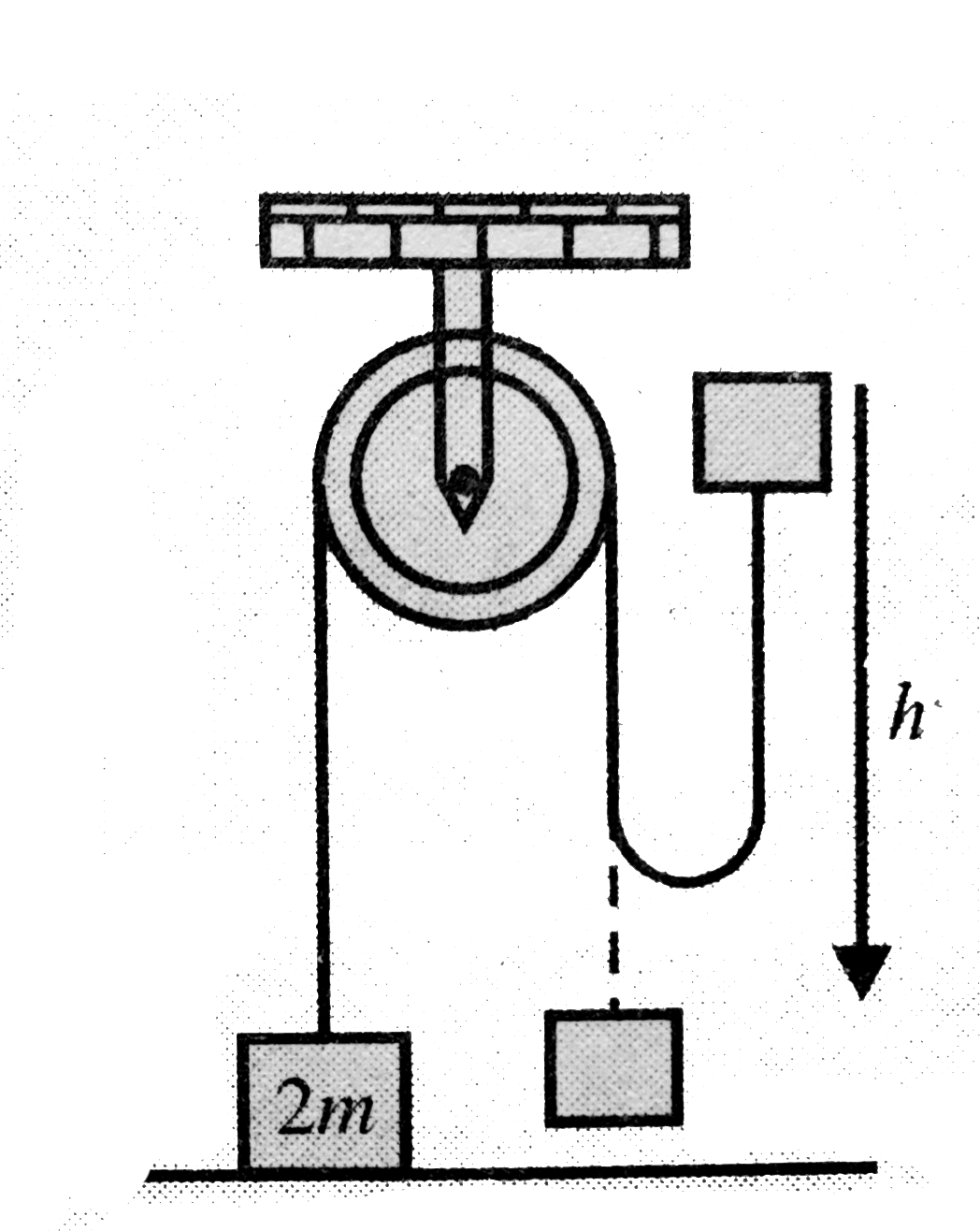 View Solution
View SolutionTwo masses M and m are connected at the two ends of an inextensible string. The string passes over a smooth frictionless pulley. Calculate the acceleration of the masses and the tension in the string. Given M>m.
View Solution
Knowledge Check
- Question 1 - Select One
A block of mass m1 lies on a smooth horizontal table and is connected to another freely hanging block of mass m2 by a light inextensible string passing over a smooth fixed pulley situated at the edge of the table. Initially the system is at rest with m1 a distance d from the pulley. Then the time taken for m1 to reach the pulley is.
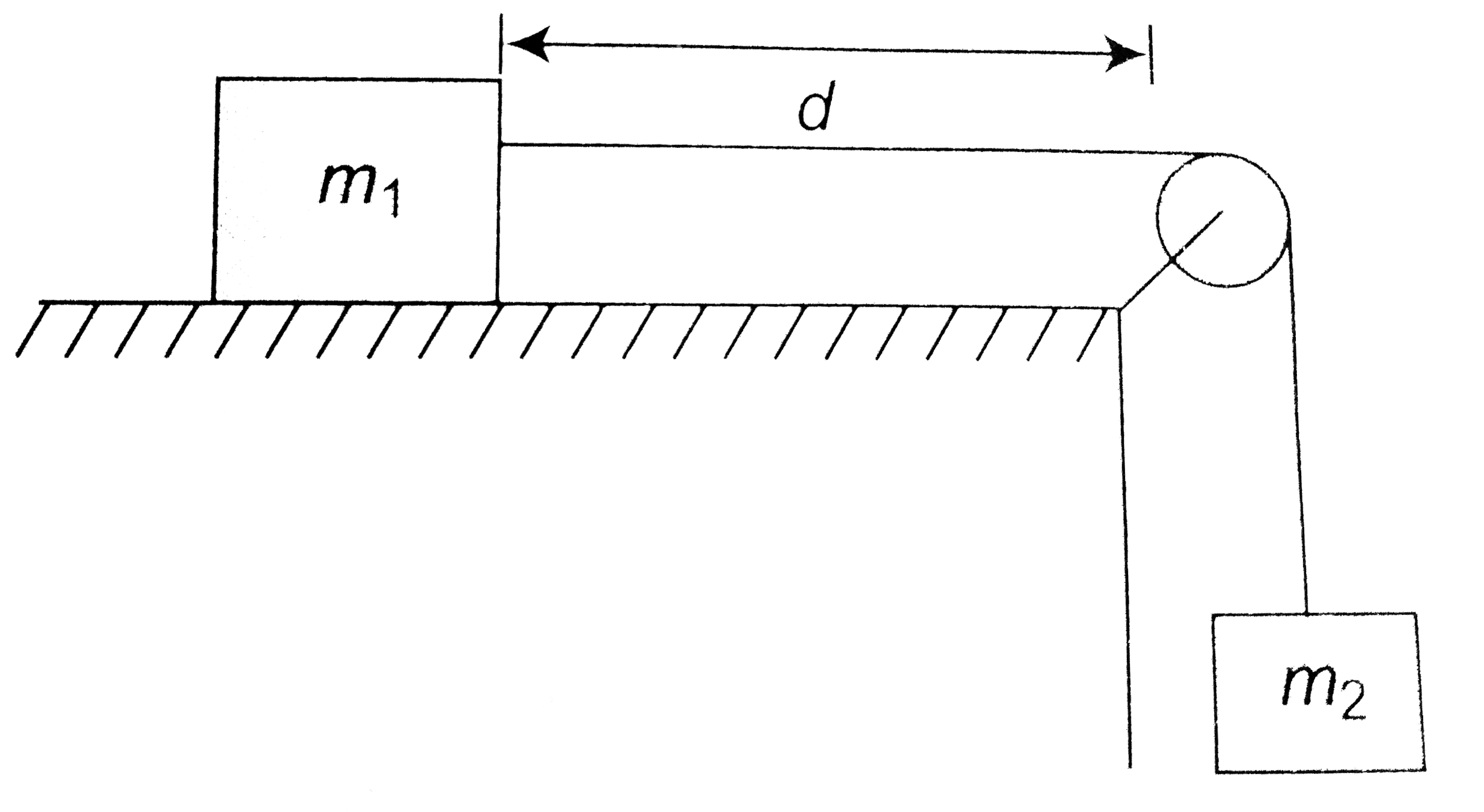 Am2gm1+m2B√2d(m1+m2)m2gC√2m2d(m1+m2)gDNone of thess
Am2gm1+m2B√2d(m1+m2)m2gC√2m2d(m1+m2)gDNone of thess - Question 2 - Select One
A block of mass m1 rests on a horizontal table. A string tied to the block is passed on a frictionless pulley fixed at the end of the table and to the other end of string is hung another block of mass m2. The acceleration of the system is
Am2gm1+m2Bm1gm1+m2CgDm2gm1 - Question 3 - Select One or More
Two masses m and M(m<M) are joined by a light string passing over a smooth and light pulley (as shown)
 Athe acceleration of each mass is (M−mM+m)gBthe tension in the string connecting masses is (2MmM+m)gCthe thrust acting on the pulley is (4MmM+m)gDNone of the above
Athe acceleration of each mass is (M−mM+m)gBthe tension in the string connecting masses is (2MmM+m)gCthe thrust acting on the pulley is (4MmM+m)gDNone of the above
A block of mass m1 rests on a horizontal table. A string tied to the block is passed on a frictionless pulley fixed at the end of the table and to the other end of string is hung another block of mass m2. The acceleration of the system is
View SolutionA light particle of mass m is connected to another very heavy particle by means of a light inextensible string that passes over a smooth pulley. The reading of the spring balance is approxinately
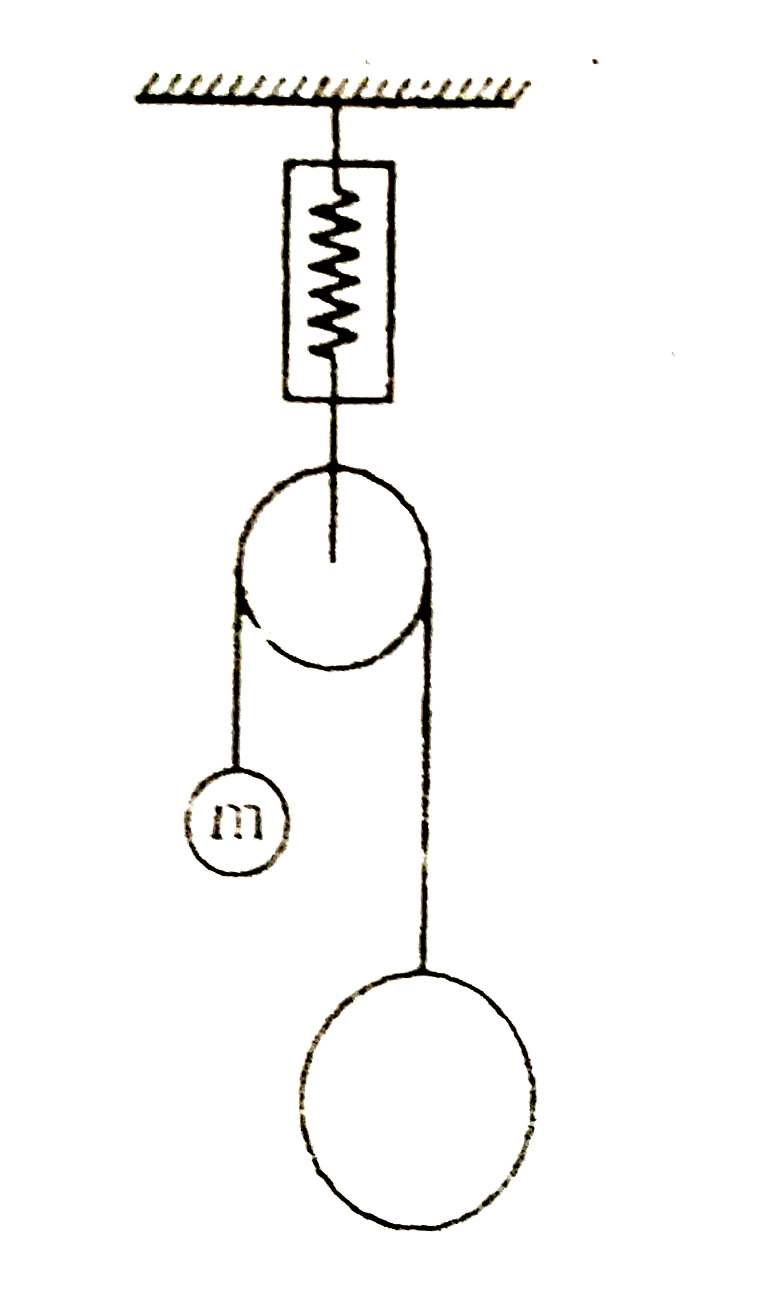 View Solution
View SolutionTwo bodies of masses 4kg and 6kg are attached to the ends of a string which passes over a pulley, the 4kg mass is attached to the table top by another string.The tension in this string T1 is equal to
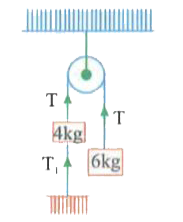 View Solution
View SolutionTwo masses m and M(>m) are joined by a light string passing over a smooth light pulley. The centre of mass of the system moves with an acceleration
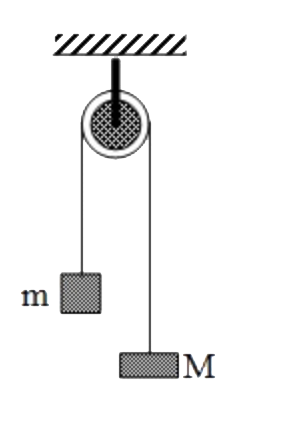 View Solution
View SolutionTwo masses ,each equal to m ,are arrached to one another by a massless string passing over a smooth pulley the tension in the string is :
View Solution

